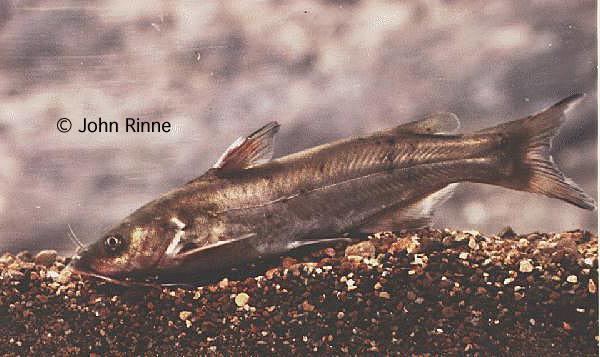Kingdom Animalia Order Siluriformes Genus Ictalurus Higher classification Ictalurus | Phylum Chordata Family Ictaluridae Scientific name Ictalurus pricei Rank Species | |
 | ||
Similar Catfish, Ictalurus, Ictaluridae, Ictalurus lupus, Yaqui chub | ||
The bagre de Yaqui, or Yaqui catfish (Ictalurus pricei), is a species of North American freshwater catfish endemic to Mexico.
Contents
Description
The coloration of the Yaqui catfish is dark gray to black dorsally, and white to grayish beneath. The barbells of the catfish are jet-black except on the chin, where they are gray to whitened. The Yaqui catfish body is usually profusely speckled". A reddish coloration on the catfish is prominent beneath the head, as well as on the fins and tail. The adult size is up to 57.0 cm.
Range
The Yaqui catfish historically occurred in San Bernardino Creek as far up as San Bernardino Ranch, Arizona. An introduced population of catfish existed in the Monkey Springs Reservoir system near Patagonia, Arizona from 1899 until the 1950s. The stock presumably came from the Rio Sonora basin of Sonora, Mexico, where the species still lives. A small population of 350 fish has been re-introduced into the Rio Yaqui on the Northern most portion of the San Bernardino National Wildlife Refuge in November 1997.
Habitat
The Yaqui catfish are found primarily in ponds or streams, primarily in larger rivers but also in small streams where it prefers quiet, clear pools. The catfish are most common in larger rivers in areas of medium to slow currents over sand/rock bottom. Streams flow intermittently in the dry season, and the catfish seeks refuge in permanent, often spring fed pools.
Population Trends
The Yaqui catfish survived in San Bernardino Creek until spring flows diminished because of groundwater pumping causing the creek dried up. The remaining habitat at San Bernardino Creek was severely trampled by livestock, making it uninhabitable. The catfish were introduced in 1899 into the Santa Cruz River System (in reservoir fed by Monkey Spring) where they persisted until the 1950s. A small population of 350 fish has been re-introduced into the Rio Yaqui on the Northern most portion of the San Bernardino National Wildlife Refuge in November 1997, however outside the San Bernardino refuge the Yaqui catfish have become extinct from United States waters.
Management Factors
Activities that are known to be detrimental to the Yaqui catfish populations are the de-watering of habitats through stream usage and re-routing, stream impoundment, channelization, domestic livestock grazing, timber harvesting, mining, road construction, polluting, and stocking non-natives.
Threats: aquifer pumping; reduction in stream flows; water diversion; drought; hybridization, competition and predation by nonnative fishes.
Management Needs: protect San Bernardino aquifers, and Leslie Creek and Black Draw watersheds to ensure adequate perennial flow; ameliorate effects of nonnative fishes; reintroduce into suitable habitats within historical range; stabilize and protect populations in Mexico.
